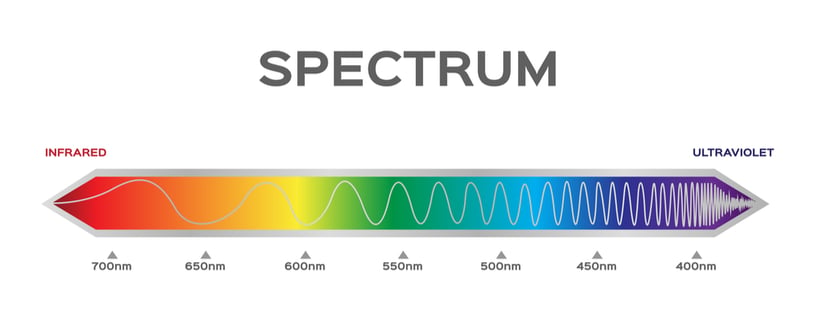When investing in your own company, it is pertinent to understand and analyze every possible option so you can help optimize your investment. Since the turn of the century, LEDs have taken the lighting industry by storm, providing an ultra-efficient, compact lighting solution that's malleable to any application. Although initial investments in LED are marginally larger than Incandescent/CFL/HID, the ROI [ return on investment] is much shorter and provides noticeably substantial savings in consumption and thermal discharge.

1) Energy Efficiency:
LED is an acronym, and translates to Light Emitting Diode. They are ultra-efficient SSL's [Solid State Lights] that provide sensible, reliable advantages to alternative lighting solutions. How do they work? LEDs are similar light pixels that emit varying intensities and spectrums of red, green, and blue light that can be manipulated to any desired color and brightness. When placed on a micro-chip, an electrical current will pass through the LEDs causing them to illuminate, creating directional-visible light.
Unlike any other light source, LEDs utilize 95% of their consumed energy. Only 5% of their consumed energy is wasted as thermal discharge, and when compared to Incandescent lights that waste around 30% of their consumed energy, the benefits become increasingly obvious. This advocates LEDs as a compelling choice for large, industrial applications where every-penny counts.
2) Life-Span:
When comparatively indexed to any other lighting product, LEDs have repeatedly demonstrated their reliability and longevity in various applications. Unlike compact fluorescent lighting [CFL] and incandescent bulbs, LED's will not "fail" or "burn-out". Instead, LEDs experience something commonly referred to as lumen depreciation. Lumen Depreciation occurs when an LED experiences a light output decrease greater-than or equal-to 30%. These attributed features of LED technology have proven their attractiveness to investors and lighting designers alike, as warranties and expected life-spans can double or triple in comparison to LED alternatives.
3) Reduced Thermal Output:
One of the most commonly over-looked benefits encompassing LED's is "reduced thermal output". One of the main variables in determining an LED's life-span is operating temperature. If you are able to reduce operating temperatures, you will optimize longevity and efficiency of your LED. The benefits go further, as in some environments, LEDs will reduce air-conditioning expenses because of their heat-reduction properties . Although in small applications benefits are almost negligible, in large industrial and commercial applications, it can provide significant energy savings during summer months. One of our most recent customers, "Major Tool & Machine", has reported a 3-year ROI and an immediate 30% in energy-savings since we produced their latest, ultra-efficient lighting solution. If you are interested in a free lighting consultation for you business, please click here.
4) Adjustable Color Temperature [CCT]:
A common misconception surrounding LEDs is that they only produce harsh white light. While the technology was still in its infancy, that may have been true. However, over the past 10 years, new innovations in LED technology have allowed us to achieve any desired color-temperature of light. Color-temperature is measured in Kelvin, and ranges from 1000K to 10,000K; 1000K providing a "warmer feel" similar to incandescent lights, while 10,000K presents a "cooler feel" similar to compact-fluorescent lights.

New medical studies suggest that varying color-temperatures have differentiating effects on our brain - "The installation of new high correlated colour temperature (17000 K) fluorescent lighting in a shift-working call centre appears to have contributed to wide ranging improvements in wellbeing, functioning and work performance amongst study participants." [PMC]. These recent medical discoveries are revolutionary, and are influencing large companies of all industries are beginning to look towards lighting companies to optimize overall work performance.
5) Operations & Maintenance costs:
One of the most frequently asked questions regarding LEDs is: what are the maintenance and operation costs? Let's start by breaking down the the three most frequent expenses within the lighting industry: replacement of the LEDs, cost of labor to perform such repairs, and warranty.
Replacing light-fixtures can be a significant expense for some businesses, but as a business, It's imperative that you understand the specific application(s), environment(s), and usage that your lights will under-go. Replacements for standard bulbs range anywhere from 1,200 hours [incandescent] to 30,000 hours [fluorescent], whereas every LED product that we proudly manufacture in the US comes standard with a 100,000 hour warranty.
Here at XtraLight, we go the "XtraMile". With over 34 years in the lighting industry, we pride ourselves on our ability to minimize labor costs by simplifying every-aspect of the installation. Every step of the design process is catered specifically to reduce operation costs, and when you pair reduced maintenance/operation(s) costs with an industry leading 10 year factory warranty, it seems almost too good to be true.
6) Dimmability:
LEDs have many advantages in comparison to market alternatives. A prominently attractive feature present in LED's is the dimmability. Although dimmability has been over-looked throughout the years because of "flicker or hum" properties, LED's in 2019 now have dimming capabilities down to 1% brightness while maintaining consistent output. This provides a multi-variable, ultra-efficient, reliable platform for interior lighting designers.
7) Zero UV Emissions:
Upon the "revelation" of compact-fluorescent lighting, people were astounded with the prevalent cost-reductions and increased energy efficiency. Currently, studies are being published regarding UV [ultra-violet] emissions in households, and its relation to cancer. The University of New York at Stony Brook published in a paper that tiny defects in the bulbs can let through UV light that can damage skin cells and lead to cancer [NPR]. How would this be possible? Let's find out.
Compact fluorescent lights contain mercury vapor. When an electrical current passes through the mercury vapor, the mercury vapor releases a substantial amount of UV radiation. Manufacturers have responded by layering the inside of these bulbs with phosphors to help absorb the radiation, but evidence in real-time applications provides insight that this method is not effective. "According to the researchers at Stony Brook, if that phosphor coating cracks, UV light escapes. They saw bald spots in nearly all the bulbs they collected from retail stores [NPR].
Fortunately, LEDs don't utilize mercury vapor. Instead, they use a blue light source . Within all white LED bulbs is a blue light source, which is converted to a full spectrum of colors by phosphors. Even if the phosphor coating is damaged, the blue light within sits firmly on the visible spectrum, and poses no danger to human skin. [NPR]
So in conclusion: Unlike compact fluorescent lights, LEDs do not need mercury vapor, so they effectively pose no threat to human anatomy.
8) Instant On:
All high-powered lights including incandescent, metal halide, fluorescent, and high-Intensity discharge lights require a set amount of time just to turn on. Mercury vapor tubes within the bulb can take from a couple seconds to a few minutes for the plasma to heat-up, creating an inconvenience for any user. Fortunately, new technologies in high-powered LEDs present a compelling alternative that offer "instant-on" technology. Having this feature could prove very beneficial for a time-critical business that may face frequent power-outages.
9) Color Rendering Index [CRI]:
In case you didn't know, all light is not equal. Different lights display different hues, vividness, and color harmonies. Have you ever had trouble differentiating different colors in certain light?
One of the lesser known variables in LED lighting is the CRI [color rendering index]. CRI is a measure of a light source's ability to show object colors "realistically" or "naturally" [LRC] while also representing the light's intensity throughout the spectrum. CRI is rated on a scale in-between 0 to 100, with 0 being the minimum, and 100 being the maximum, representing our sun's spectrum. Additionally, CRI and CCT have a direct relationship. For example, warmer incandescent lights usually have a CRI above 95, whereas cooler fluorescent lights have a CRI around 60.


